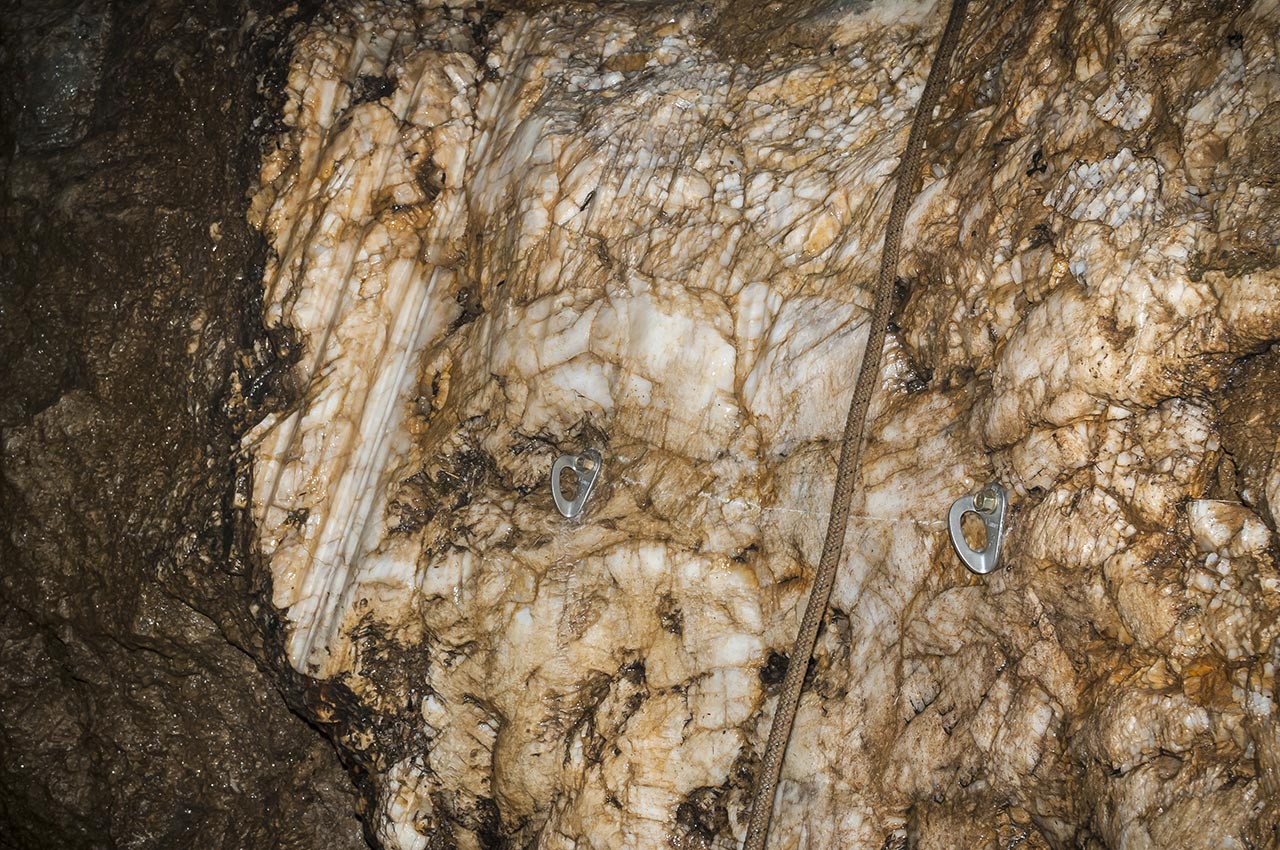Bob Mehew
Well-known member
Recently BCA?s E&T Committee has briefly discussed screw in anchors. I decided that although this was a piece of work still in progress, I felt it was worthy of being offered out for comment and also seek contributions on other persons experiences. I have not fully searched ukCaving forum but think I have reflected the significant recent comments.
Screw in anchors are a simple bolt with a screw like body and usually a hexagonal shaped head. They just require one to drill a hole into the rock and then simply screw the anchor into the hole, the anchor being self tapping. A hanger is also required to enable one to attach a rope or whatever to the anchor. Screw in anchors are also know by the name of one of the early manufacturers, Multi Monti. Another popular name is Thunderbolt.
Screw in anchors are manufactured by a range of companies, some more reputable than others. Some anchors are offered with a CE marking to meet certain European Technical Approvals for use in buildings. None so far have been found to offer meeting the European Standard for Personal Protective Equipment and in particular EN 795:2012 for PPE anchors or EN 959:2007 for mountaineering anchors.
Data supplied by some manufactures indicates that it is possible that their screw in anchors could meet the mountaineering anchors standard. There is also some reports by other caving organisations (see http://ssf.ffspeleo.fr/fr/cellule-de-veille-technique/vos-questions-les-reponses-de-la-cvt/161-cellule-de-veille-technique/vos-questionsles-reponses-de-la-cvt/475-multi-monti-spits-goujonsq and https://cexcartagena.files.wordpress.com/2009/06/article_tornillos.pdf ), but to emphasise, it is not clear that these bodies are recommending their use.
However experience in the UK has indicated that other manufacturers do not seem to have achieved the quality required by these standards. In addition to the report by BMC (see https://www.thebmc.co.uk/bolt-failures-on-north-wales-limestone ) where the shaft sheared a small distance from the head, BCA?s Equipment and Techniques Committee has now received reports of several other unspecified failures in use.
It is a matter of speculation but failure modes could include:
? Insufficient material strength
? Manufacturing defects
? Over torquing the head during placement creating a incipient failure
? Corrosion between hanger and anchor made of different materials
In addition reports have also been made that the bolt can unscrew though the mechanism is as yet unclear. A suggestion has been made that an application of a resin / glue the hole before screwing in the anchor helps bond the anchor in place and stops the unscrewing. It has also been suggested that one might be able to reuse the hole and anchor. This may well increase the potential for unscrewing.
The anchor does have one major positive conservation feature in that it is usually possible to unscrew and remove the anchor.
E&T do not at the moment have plans to test this type of anchor. Given the information to hand, it seems difficult to provide any recommendation for the use of a screw in anchor.
Screw in anchors are a simple bolt with a screw like body and usually a hexagonal shaped head. They just require one to drill a hole into the rock and then simply screw the anchor into the hole, the anchor being self tapping. A hanger is also required to enable one to attach a rope or whatever to the anchor. Screw in anchors are also know by the name of one of the early manufacturers, Multi Monti. Another popular name is Thunderbolt.
Screw in anchors are manufactured by a range of companies, some more reputable than others. Some anchors are offered with a CE marking to meet certain European Technical Approvals for use in buildings. None so far have been found to offer meeting the European Standard for Personal Protective Equipment and in particular EN 795:2012 for PPE anchors or EN 959:2007 for mountaineering anchors.
Data supplied by some manufactures indicates that it is possible that their screw in anchors could meet the mountaineering anchors standard. There is also some reports by other caving organisations (see http://ssf.ffspeleo.fr/fr/cellule-de-veille-technique/vos-questions-les-reponses-de-la-cvt/161-cellule-de-veille-technique/vos-questionsles-reponses-de-la-cvt/475-multi-monti-spits-goujonsq and https://cexcartagena.files.wordpress.com/2009/06/article_tornillos.pdf ), but to emphasise, it is not clear that these bodies are recommending their use.
However experience in the UK has indicated that other manufacturers do not seem to have achieved the quality required by these standards. In addition to the report by BMC (see https://www.thebmc.co.uk/bolt-failures-on-north-wales-limestone ) where the shaft sheared a small distance from the head, BCA?s Equipment and Techniques Committee has now received reports of several other unspecified failures in use.
It is a matter of speculation but failure modes could include:
? Insufficient material strength
? Manufacturing defects
? Over torquing the head during placement creating a incipient failure
? Corrosion between hanger and anchor made of different materials
In addition reports have also been made that the bolt can unscrew though the mechanism is as yet unclear. A suggestion has been made that an application of a resin / glue the hole before screwing in the anchor helps bond the anchor in place and stops the unscrewing. It has also been suggested that one might be able to reuse the hole and anchor. This may well increase the potential for unscrewing.
The anchor does have one major positive conservation feature in that it is usually possible to unscrew and remove the anchor.
E&T do not at the moment have plans to test this type of anchor. Given the information to hand, it seems difficult to provide any recommendation for the use of a screw in anchor.




